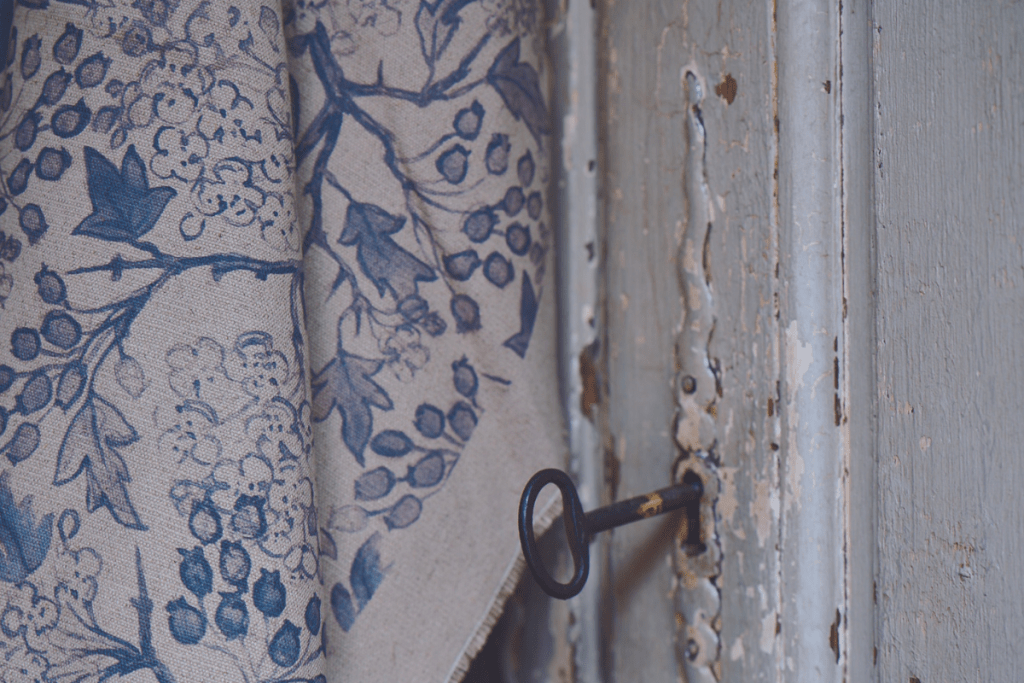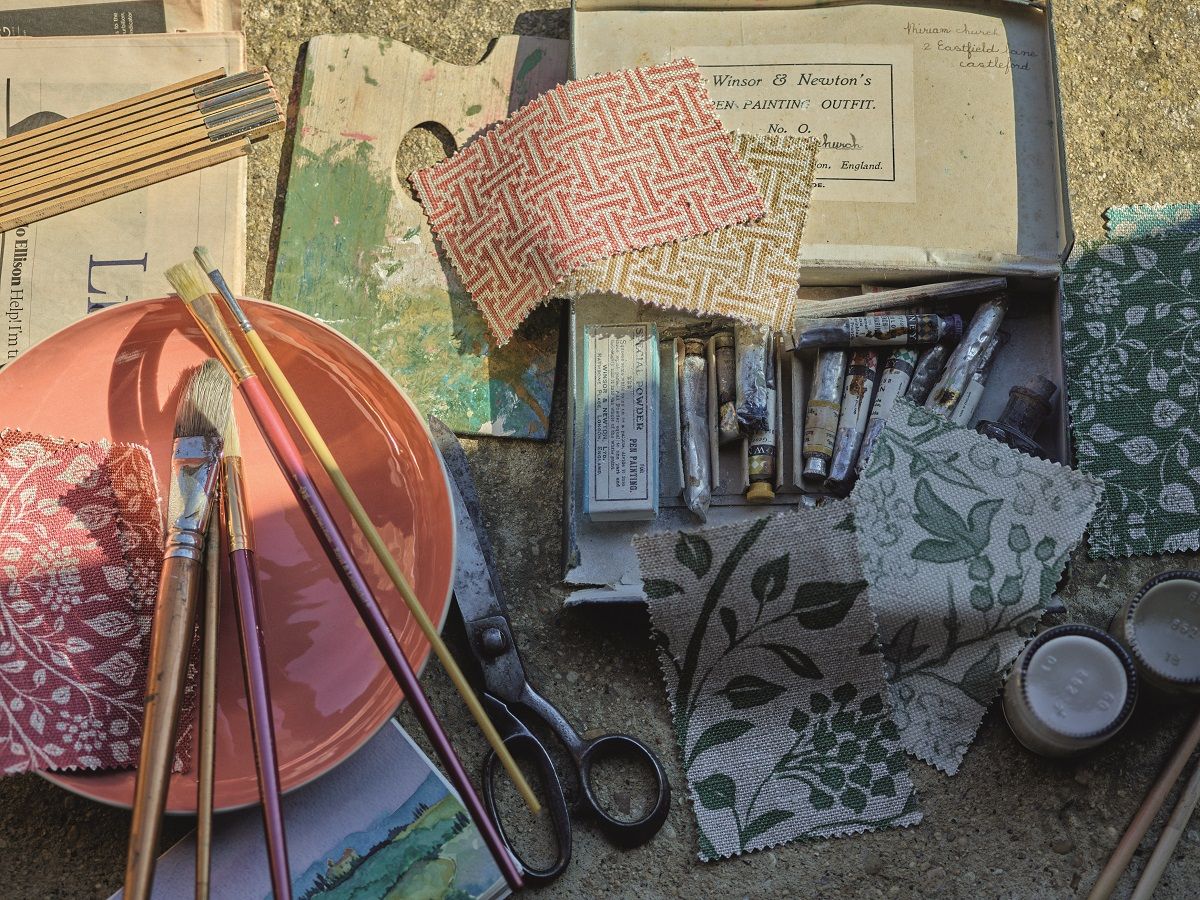“The first purpose of a garden is to be a place of quiet beauty such as will give delight to the eye and repose and refreshment to the mind.”
Gertrude Jekyll, A Gardener’s Testament.
For those with an interest in the history of horticulture, the name of Gertrude Jekyll (1843-1932) conjures up visions of English gardens of great beauty. Jekyll came to garden design later in life but still created some 400 gardens in the UK, Europe and America: a remarkable output. Her influence on garden design is pervasive and persists to this day. She was also a prolific author, writing eloquently on the soothing qualities of plants and gardening; wisdom that we wholeheartedly share and celebrate in our collaborative fabric collections with the Royal Horticultural Society (RHS).
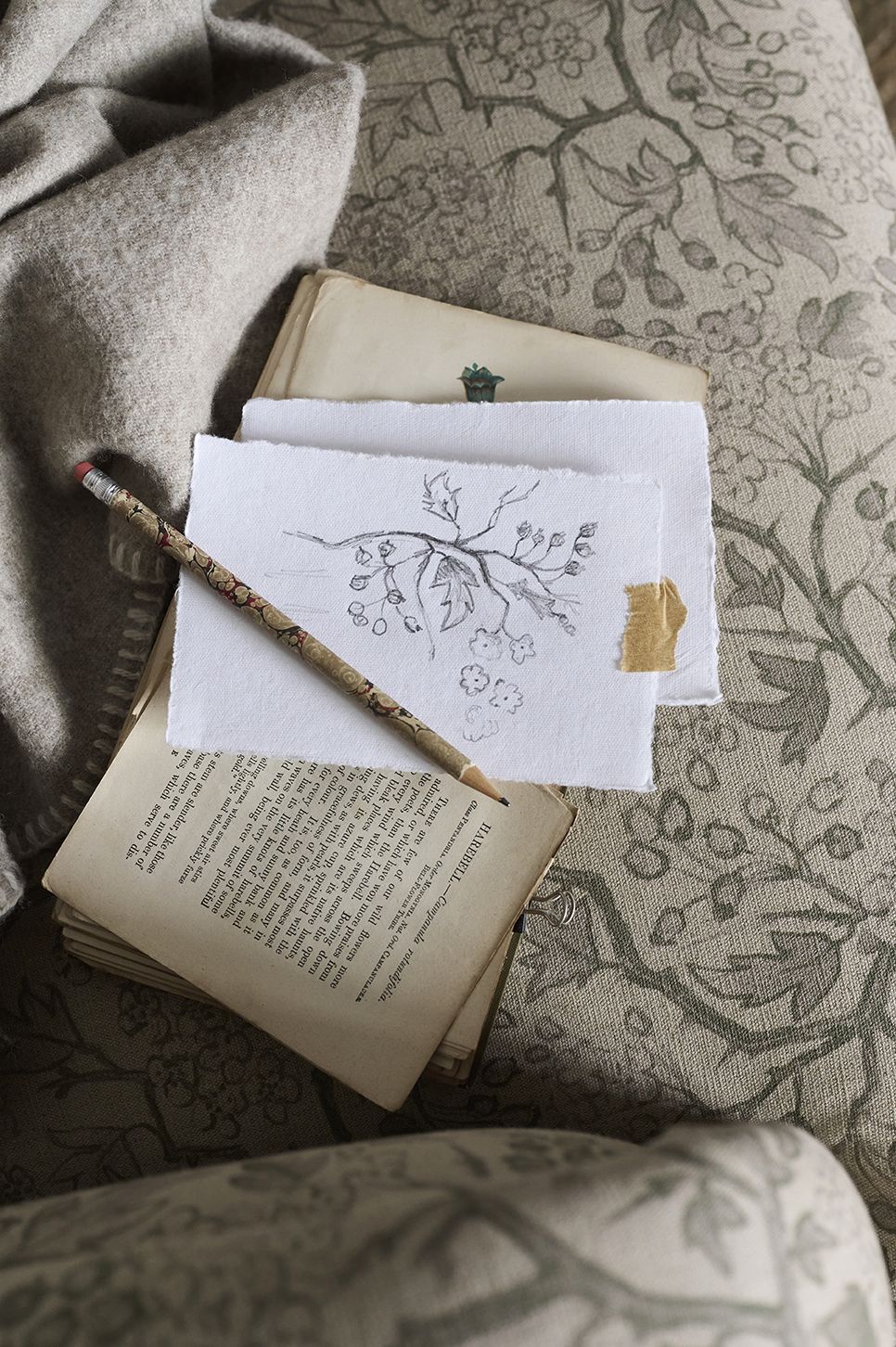
A fabric inspired by Gertrude Jekyll’s artistic touch
One of the things which drew Sofas & Stuff’s founder and CEO, Andrew to collaborate with the RHS was the direct connection it offered to the well-documented British love of gardening. And, more particularly, to the feelings of contentment and repose that plants and gardening can bring. In Andrew’s words, ‘we want our homes to feel calm, and what better way of doing it than by bringing nature in and onto your sofa.’ Inspired by the passion of Britain’s leading gardening charity, and with access to the RHS’s vast Lindley Collections, Andrew was able to select works from artists and garden designers spanning the 17th to 20th centuries. Among them, a painted sketch by Gertrude Jekyll caught his eye.
The design takes Jekyll’s original sketch of a floral and leafy spray, reproducing and repeating it in a free-flowing, tumbling design across the fabric. It captures her fresh, naturalistic approach to planting and honors her skill as an artist. We’ve created it in six naturalistic colourways, presented on three beautiful fabrics, a wonderfully tactile 100% linen, a soft and durable linen/cotton blend and newly launched on a delightfully tactile velvet. This design, like all of the fabrics in the RHS Collection, can be used across Sofas & Stuff’s range of British handmade bespoke sofas, chairs, beds, footstools, and cushions, or purchased for curtains and other soft furnishing projects.
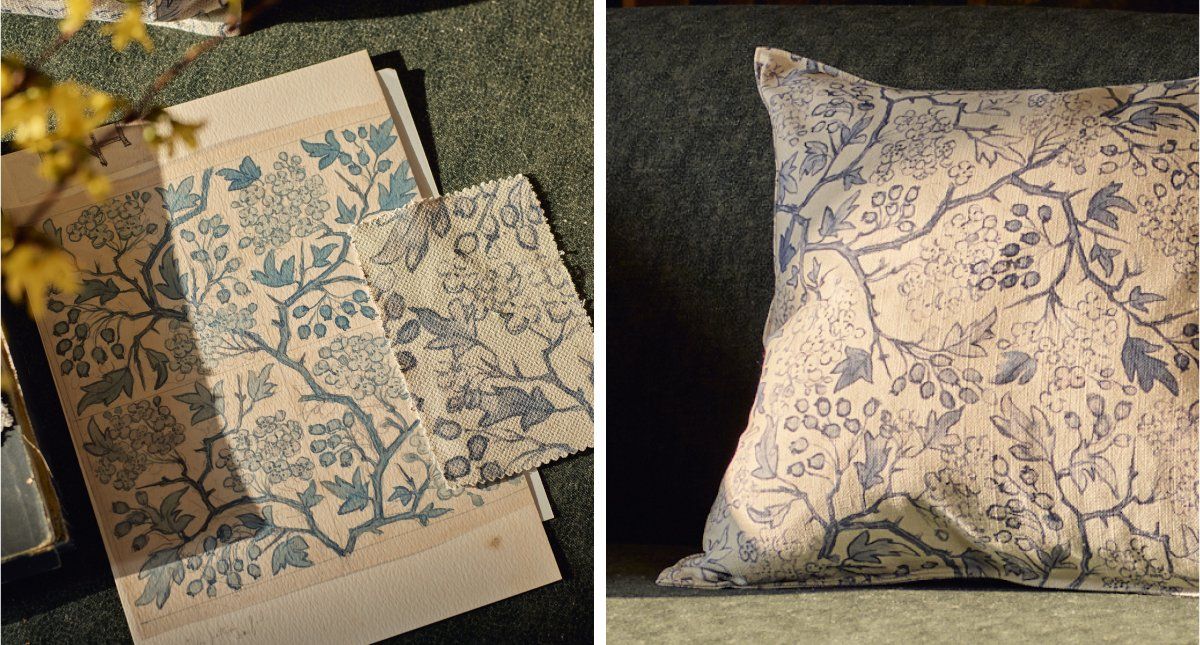
Additional Gertrude Jekyll designs added
Continuing our journey with Gertrude Jekyll’s designs, the 2023 RHS collection delves deeper into her artistic range. Five sketches, sourced from her ‘Designs for Carving’ scrapbook (dated 1866-1911), aseven fabric designs. They include a mix of simplified floral representations alongside tracings of architectural carvings and a geometric lattice design, creating a rich variety and depth. They not only explore her interest in flowers and planting, but also her broader interests in culture, travel, and architecture.
In celebration of this rich set of prints, we wanted to delve a little deeper in the life and work of this remarkable woman.
Gertrude Jekyll – Painter and Polymath
As a young woman in the early 1860s, Gertrude trained as an artist at the South Kensington School of Art in London. She was undoubtedly a talented painter having her work exhibited at the Royal Academy of Arts by the age of 23. She was equally adept at a whole range of crafts, including embroidery, metal work, carving and interior design. These creative pursuits brought her into contact with key figures in the Arts and Crafts movement, including Ruskin, Frederick Leighton, Burne-Jones, GF Watts and William Morris. These connections and relationships were to play a huge role in her life and work, most notably bringing her into contact with the principal architect of the Arts and Crafts movement, Sir Edwin Lutyens in 1889, a man 25 years her junior but with whom she collaborated with on her most significant garden designs and planting schemes.
Jekyll’s attitude towards garden design was strongly influenced by Arts and Crafts principles. Her approach required each individual plant to be chosen for its habit, foliage and colour, so as to achieve a practical and natural, as well as beautiful effect. At its heart was the belief that a sensitive connection between house and surroundings was vital. The garden should reveal unexpected views and pictorial surprises, both from the house, and as you journeyed through it.
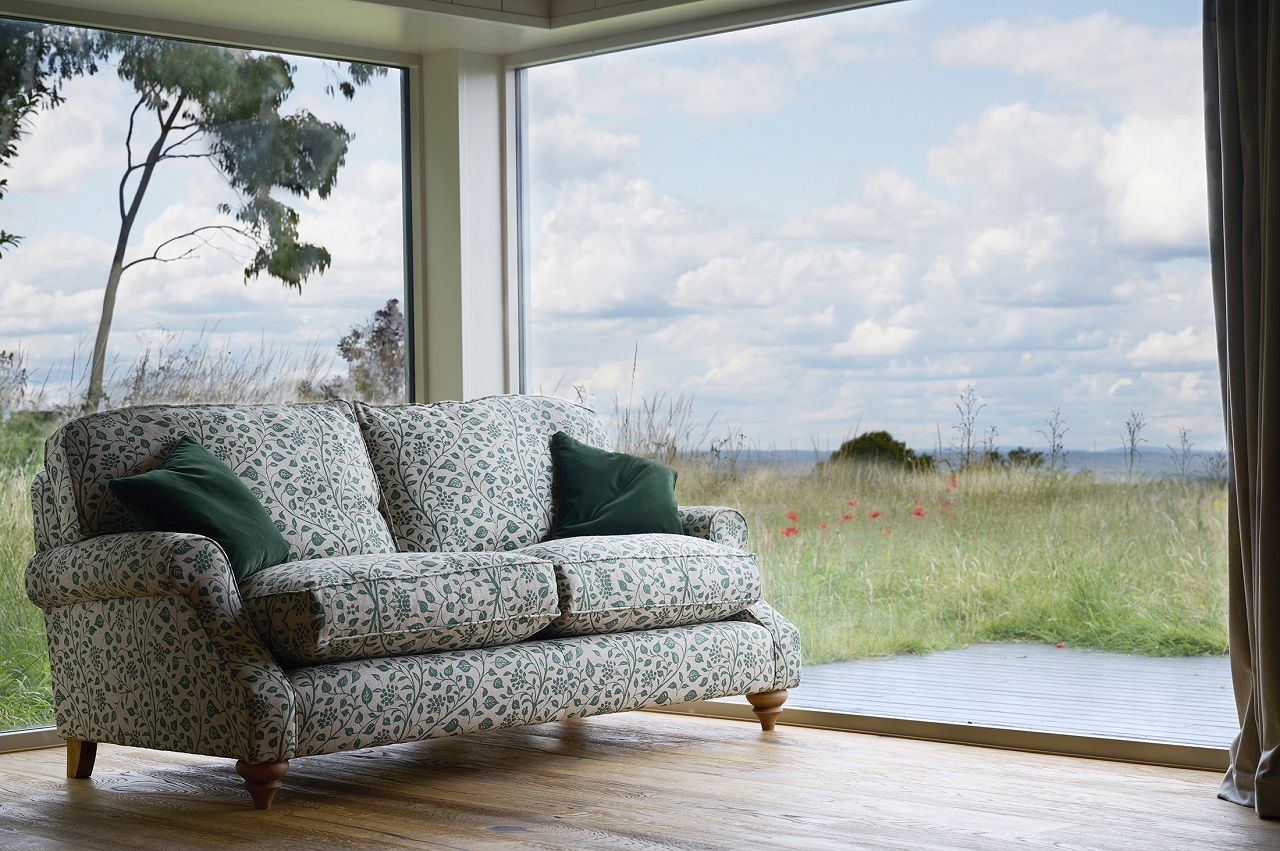
Traveller and expert plantswoman
Gertrude Jekyll was not only an accomplished garden designer but a knowledgeable botanist, with a particular focus on plants for domestic English gardens. She travelled widely, bringing back plants from Turkey, Italy, and Algeria, and contributed to the development of a number of garden varieties. Jekyll was awarded the RHS Victoria Medal of Honour in 1897, becoming the first woman, alongside Ellen Willmott, to receive the prestigious award.
In 1878 Gertrude Jekyll and her mother moved to Munstead Heath, near Godalming, where Gertrude began to design and create the garden surrounding the house. A few years later, in 1883, she bought the land across the road at Munstead Wood, where she began to create her own garden, arguably one of her greatest creations. In 1908 she established a nursery at her home at Munstead Wood, Godalming, supplying clients and other gardeners. Many of those plants have Munstead or Munstead Wood in their names, referencing her home gardens. Lots of these are still readily available today, grown and enjoyed by thousands across the world. You can read more about Jekyll’s gardening legacy in our interview with Annabel Watts, Head Gardener at Munstead Wood.
Visiting Jekyll’s gardens
Gertrude Jekyll’s gardens continue to captivate those who visit them, whether at Lindisfarne Castle, Gravetye Manor, or her own creation at Munstead Wood, which is now being renovated by the National Trust since coming under it’s wing in 2023. These gardens remain testament to her enduring influence on garden design, with many of them open to the public. Whether you’re visiting the beautifully restored gardens at Upton Grey, or enjoying the tranquil atmosphere at Tylney Hall Hotel, both in Hampshire, the spirit of Jekyll’s work can still be experienced.
“The best purpose of a garden,” wrote Jekyll, is to give delight and to give refreshment of mind, to soothe, to refine, and to life up the heart in a spirit of praise and thankfulness.” We are minded to agree, and perhaps to suggest that a wonderfully comfortable sofa or armchair, especially one covered in a beautiful patterned fabric inspired by plants and the tranquility of a garden, might offer a similarly restorative boost!
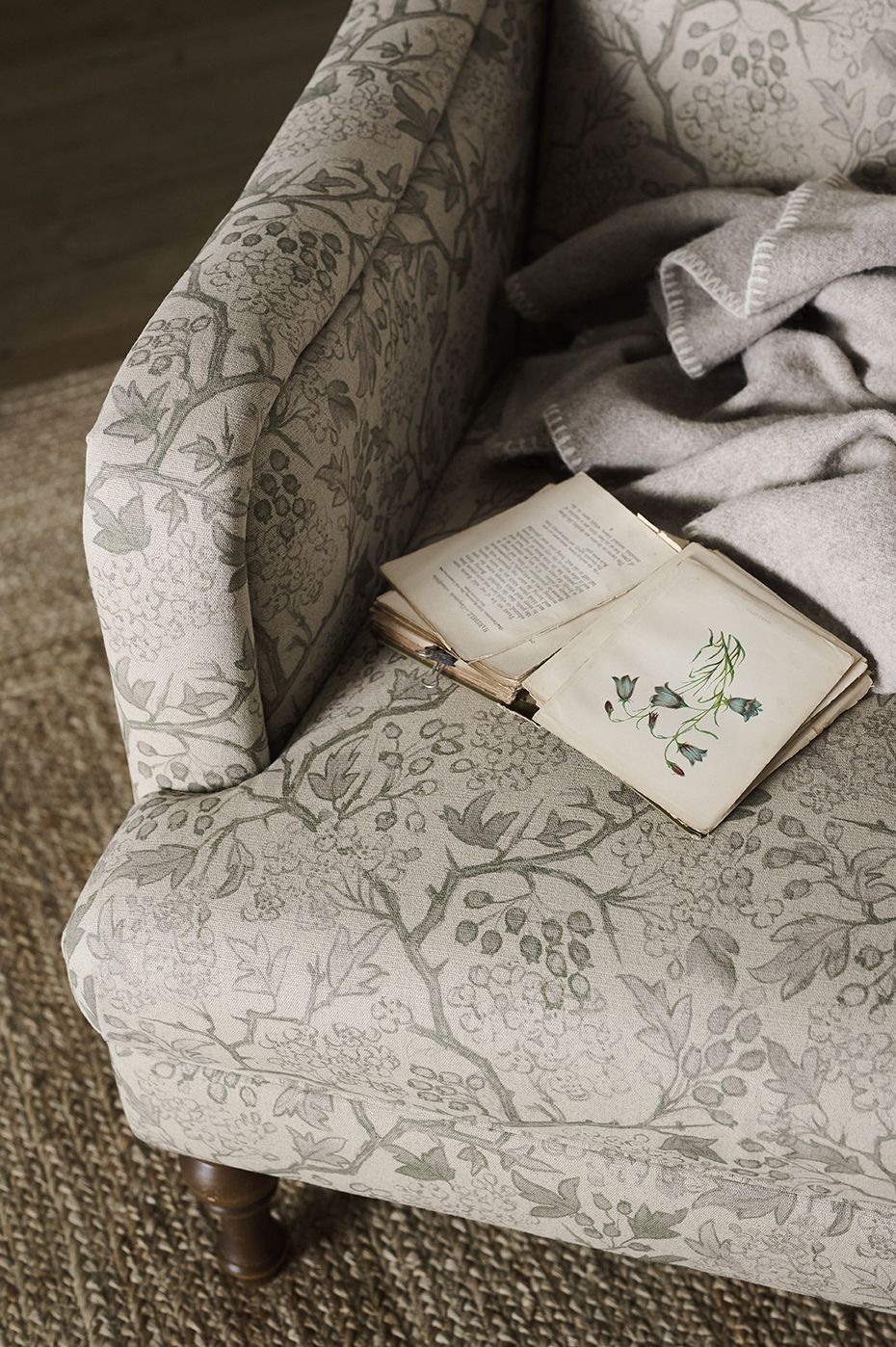
® The Royal Horticultural Society. Trade marks of The Royal Horticultural Society (Registered Charity No 222879/SC038262) used under licence from RHS Enterprises Limited.

